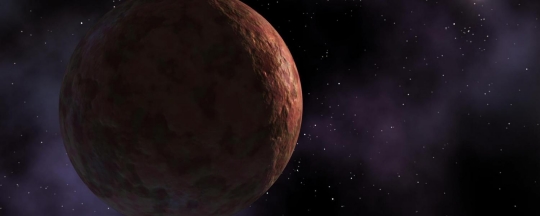Things always get interesting when the American Astronomical Society meets, which it is now doing in Denver, in sessions that will run until June 7. There should be no shortage of topics emerging from the meeting, but the first that caught my eye was a different approach to the putative world some are calling Planet Nine. Teasing out the existence of a planet at the outer edges of the Solar System has involved looking at gravitational interactions among objects that we do know about, and extrapolating the presence of a far more massive body.
But the methodology may be flawed, if new work from Ann-Marie Madigan and colleagues at the University of Colorado Boulder is correct. At a press briefing at the AAS meeting, the team presented its view that objects like Sedna, an outlier that takes more than 11,000 years to complete an orbit around the Sun, should be considered in relation to other so-called ‘detached bodies.’ Almost 13 billion kilometers out, Sedna is one of a collection of such objects that appear in some ways to be in another category from the more conventional inner worlds.

Image: An artist’s rendering of Sedna, which looks reddish in color in telescope images. Credit: NASA/JPL-Caltech.
Sedna and its ilk come nowhere near the larger planets of our system, and their orbits may tell a tale. As this CU-Boulder news release explains, it was an undergraduate student named Jacob Fleisig who began to model a significant pattern known as ‘inclination instability’ that Madigan had previously described in the literature. Fleisig’s computer modeling illustrates how inclination instability can ease Sedna’s orbit from oval to circular over time.
In the model, accumulating gravitational forces drive growth in the orbital inclinations of objects in eccentric orbits. From the new work:
…secular (orbit-averaged) gravitational torques between orbits in the disk drive exponential growth of their inclinations. As the orbits’ inclinations grow, they tilt in the same way with respect to the disk plane. This leads to clustering in their angles of pericenter and the initially thin disk expands into a cone shape. Concurrently, the orbital eccentricities decrease and perihelion distances increase.
If such a mechanism is at work in our own system, we would expect it to occur between minor planets originally scattered to large orbital eccentricities via interactions with the giant planets. Such objects then become gravitationally detached from those planets. The authors believe this mechanism can explain the orbits of high perihelia objects like Sedna. Current studies posit anywhere from 1 to 10 Earth masses of cometary material existing at hundreds of AU from the Sun. The authors see such objects being originally scattered by the giant planets and their orbits decoupled by perturbations from cluster gas and nearby stars.
Perhaps this is all we need to explain the orbits of detached objects. There would be no need for a ‘Planet Nine’ at the edge of the Solar System. Instead, the detached objects achieve their present orbits through a series of small-scale interactions.
“There are so many of these bodies out there. What does their collective gravity do?” asks Madigan. “We can solve a lot of these problems by just taking into account that question.”
A great deal of work is ahead as the authors apply findings from their current computer simulations — “focused on the linear phase of the inclination instability in an idealized set-up” — to the outer Solar System. The paper notes their intent to model the gravitational influences of the giant planets and to focus on individual minor planets — especially those whose orbits become retrograde — instead of averaging their results for many hypothetical objects.
The paper is Madigan et al., “On the Dynamics of the Inclination Instability,” submitted to The Astrophysical Journal (preprint).



I’ve been reloading http://www.findplanetnine.com/ ever since reading this to see whether Mike Brown posts a response!
This is not actually a new hypothesis, just a new paper on it. It was mentioned back when Brown and Batygin first publicised the possibility of a P9 in 2016 by critics such as Michelle Bannister. E.g. these articles from Feb 2016;
https://www.space.com/31817-planet-nine-existence-question.html
https://eos.org/articles/proposed-planet-nine-elicits-cheers-yawns-hunt-for-proof
In fact B&B did briefly mention on findplanetnine.com that before they proposed P9 they had considered a disk explanation like Madigan’s before rejecting it.
http://www.findplanetnine.com/2016/01/premonition.html
There are multiple arguments B&B have used against this including there is no evidence of a large disk out there and that it wouldn’t fully explain all the features P9 could. Planet 9 proponents have not been convinced by it so far. This is not new evidence against Planet 9 like it is being portrayed in the media.
Is the lack of evidence indicative of no disk or not looking for one sufficiently? If the former, this might suggest this model is either no longer operating (unlikely looking at their results) or an artifact of their model that doesn’t correctly model reality, or something else). Is there any site with a good discussion about this latest work?
To me, this seems fairly independent of P9 hypothesis. P9 tries to explain the orbital characteristics of a very small population of detached objects, while this paper tries to explain the detachment of all detached objects.
To quote Heywood Floyd: “Dr. Floyd: You guys have really come up with somethin’.”
If this model is correct, it must have more implications than the effect on outer system bodies.
Interesting, although I guess without Planet Nine we’d have to look for a new explanation for the misalignment between the planets and the solar equator.